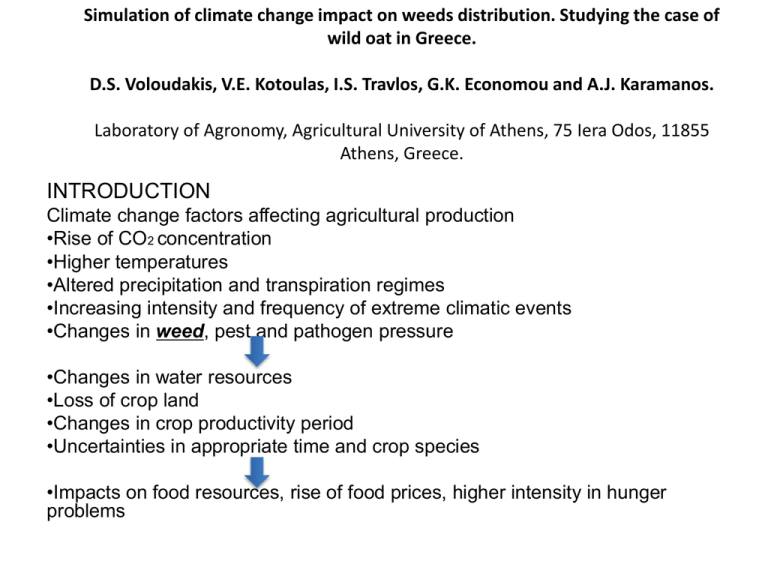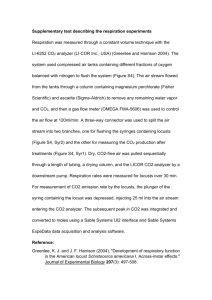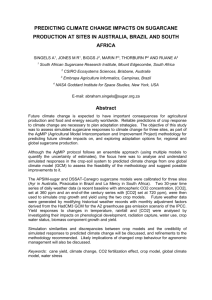Simulation of climate change impact on weeds distribution
advertisement

Simulation of climate change impact on weeds distribution. Studying the case of wild oat in Greece. D.S. Voloudakis, V.E. Kotoulas, I.S. Travlos, G.K. Economou and A.J. Karamanos. Laboratory of Agronomy, Agricultural University of Athens, 75 Iera Odos, 11855 Athens, Greece. INTRODUCTION Climate change factors affecting agricultural production •Rise of CO2 concentration •Higher temperatures •Altered precipitation and transpiration regimes •Increasing intensity and frequency of extreme climatic events •Changes in weed, pest and pathogen pressure •Changes in water resources •Loss of crop land •Changes in crop productivity period •Uncertainties in appropriate time and crop species •Impacts on food resources, rise of food prices, higher intensity in hunger problems Climate change basic scenarios SCENARIOS Α1Β Α2 Β2 TIME PERIOD 2041-2050 2091-2100 2041-2050 2091-2100 2041-2050 2091-2100 CO2 +40% +89% +40% +125% ++26% 63% Temperature +1,95⁰C +3,5⁰C +2⁰C +4,5⁰C +1,98⁰C +3,1⁰C methodology • Establishment of a field experiment in A.U.A. to evaluate the effect of certain climatic parameters on oat growth. • Phenological and physiological observations. • Use of AquaCrop model to simulate the weed growth procedure. methodology • Selection of four areas in Greece with high agronomic interest. methodology • Parameters to be calibrated • Biomass (Mg ha-1), Yield (Mg ha-1), Canopy Cover (%). Preliminary results Wild oat Biomass Yield Best fit of the model ME 0.49 0.67 1 RMSE 0.26 0.17 0 2050's without with CO2 CO2 2100's without with CO2 CO2 A1B -7% 13% 1% 25% A2 -5% 32% -4% 51% B2 1% 49% -3% 80% Thank you











